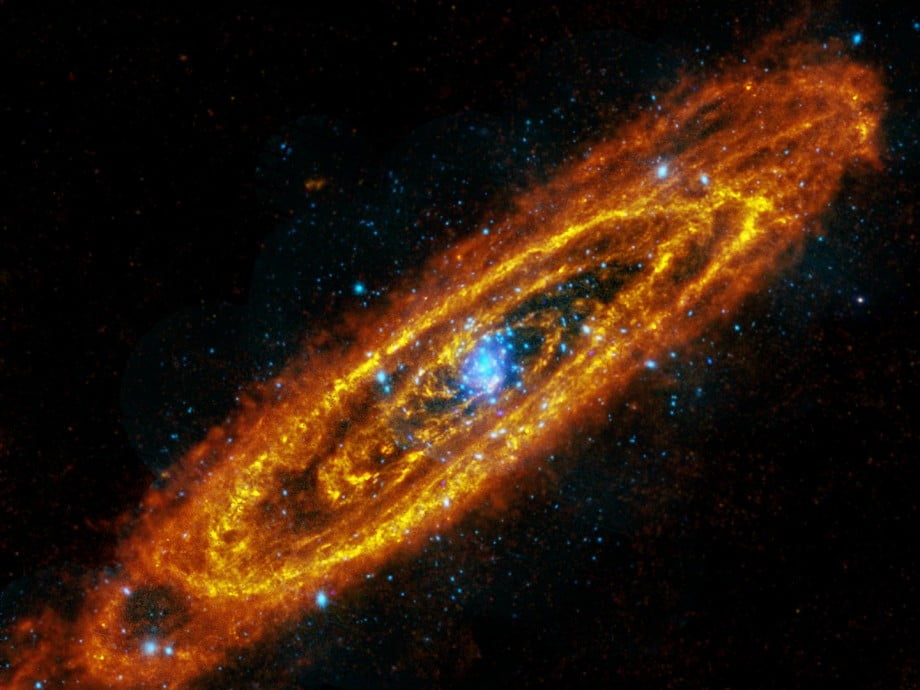Project area/S
- The Local Universe
Project Details
The Andromeda Galaxy is the sibling of the Milky Way, the largest galaxy in the local group of galaxies. As it is so nearby, we can resolve individual stars and star-forming regions in the galaxy, but unlike the Milky Way we are not sitting in the galaxy, so we also get a global picture of the galaxy. When we look at an infrared image of the Andromeda galaxy, we see large rings and circles telling us where the interstellar dust is in the galaxy. However we also see bright dots in the image. These “hot spots” indicate locations where something interesting is happening; new stars are forming or an old star is dying either in an explosion like a supernovae, or through shedding a lot of material.
This project will involve matching other wavelengths with these infrared hot spots to determine what these hot spots are. If they are young, then the student will determine how many stars are forming, and even find these young stars. This project will use existing data and catalogs of the Andromeda galaxy, and require an understanding of the emission mechanism in galaxies for each part of the electromagnetic spectrum.
Student Attributes
Academic Background
Some experience in dealing with table management and images (fits) handling.
Computing Skills
Python/IDL or equivalent.
Training Requirement
Latex, astropy.
Project Timeline
- Week 1 Inductions and project introduction
- Week 2 Initial Presentation
- Week 3-8 TBC
- Week 9 Final Presentation
- Week 10 Final Report

